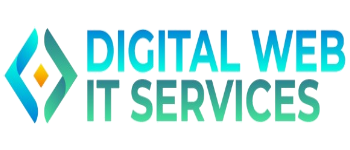Title: Understanding the Power of IoT: Transforming Our World One Device at a Time
The Internet of Things (IoT) is transforming the way we live, work, and interact with the world around us. From smart homes to connected cars, IoT technology is making everyday life more efficient, automated, and connected. But what exactly is IoT, and how is it changing the world?
What is IoT?
The Internet of Things refers to a network of physical objects, devices, or “things” embedded with sensors, software, and other technologies to collect and exchange data over the internet. These devices are capable of communicating with each other and with humans, making them smarter and more efficient in performing their functions.
In simple terms, IoT is about connecting ordinary objects to the internet, allowing them to send and receive data without human intervention.
How Does IoT Work?
IoT works through a combination of hardware and software. Here’s how it generally functions:
Devices/Things: Everyday objects such as home appliances, wearables, vehicles, or industrial machinery, equipped with sensors or actuators.
Connectivity: These devices connect to the internet through a network (Wi-Fi, Bluetooth, cellular, etc.) to share and receive data.
Data Processing: The collected data is sent to a central system or cloud, where it is processed, analyzed, and used to make intelligent decisions.
Action: Based on the analysis, actions are triggered automatically. For example, a smart thermostat adjusts the temperature based on your preferences or activity.
Applications of IoT
IoT has wide-ranging applications across various sectors. Some of the most popular and impactful ones include:
Smart Homes: IoT-powered devices like smart thermostats, lights, and security cameras are transforming our homes into intelligent spaces. They allow users to control their homes remotely, optimize energy usage, and enhance security.
Healthcare: IoT devices such as wearables, heart rate monitors, and smart medical equipment are enabling doctors to monitor patients’ health in real time. These devices help in early diagnosis, improving patient care, and reducing hospital visits.
Industrial IoT (IIoT): Manufacturing and industrial businesses use IoT devices to monitor equipment, track supply chains, and improve production efficiency. IoT helps in predictive maintenance, reducing downtime and improving operational efficiency.
Smart Cities: IoT is making cities smarter with innovations like smart traffic systems, waste management, and street lighting. These solutions improve urban living by reducing congestion, energy consumption, and improving overall city management.
Agriculture: IoT applications in farming include smart irrigation systems, crop monitoring, and livestock tracking. These technologies help farmers optimize resource usage and improve crop yields.
The Benefits of IoT
Increased Efficiency: IoT helps automate processes, reduce manual tasks, and improve productivity. Whether it’s managing energy consumption or optimizing supply chains, IoT makes operations smoother and faster.
Better Decision Making: With real-time data collection and analysis, businesses and individuals can make informed decisions. IoT helps in predicting issues before they arise, allowing for proactive measures.
Cost Savings: By improving efficiency, IoT can significantly reduce operational costs. For instance, energy-saving smart devices can lower utility bills, and predictive maintenance reduces the need for expensive repairs.
Enhanced Convenience: IoT makes life more convenient by automating everyday tasks. Imagine controlling your home lighting, heating, or appliances with a simple voice command or mobile app.
Challenges of IoT
While IoT offers enormous potential, it also comes with challenges:
Security Concerns: As IoT devices collect vast amounts of data, ensuring the security of personal and sensitive information is critical. Breaches and cyberattacks are potential risks to both individuals and businesses.
Interoperability: Different IoT devices may not always work well together due to varying standards and protocols. This can cause compatibility issues, making it harder for consumers to integrate devices from different manufacturers.
Data Privacy: With the constant flow of data between devices and servers, data privacy becomes a concern. It’s important to have regulations and systems in place to ensure user data is protected.
The Future of IoT
The future of IoT is promising, with continued advancements in artificial intelligence (AI), machine learning (ML), and 5G networks, which will unlock even more potential for connected devices. As IoT technology matures, we can expect even smarter homes, more efficient industries, and new solutions to global challenges.
In conclusion, IoT is not just a trend—it’s a fundamental shift in how we interact with the world around us. As more devices become connected, the possibilities for innovation and improvement in our daily lives are limitless. Embrace the future of IoT, and get ready for a more connected world.


